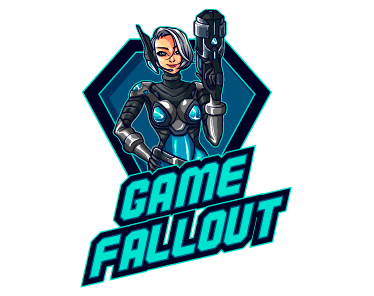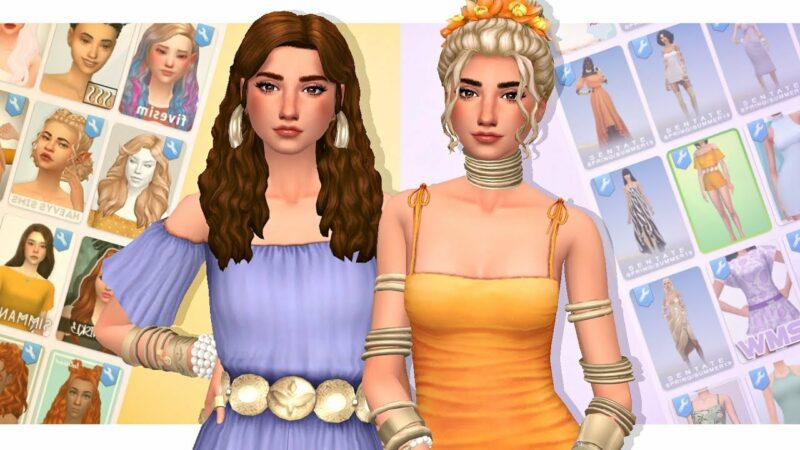There are many ways to play Kingdom Death, but few games have found success in the saturated market that is board gaming. The one thing holding them back from reaching a wider audience and breaking into mainstream culture? Story. Townsfolk Tussle breaks up the monotony of no story with an innovative card-based game where players “fight for survival” against each other – except there’s no hope for victory!
The “townsfolk tussle solo” is a game that is similar to Kingdom Death. It has the same gameplay, but without the story elements.
Panic Roll was a modest publisher that existed once at a time, in the middle of a worldwide epidemic. They were fresh to town at a time when the days were bleak and money was scarce. They wanted to spread pleasure via a game they’d made, but no one knew who they were. To get noticed, they’d have to do something huge and spectacular. They had made something both comical and cruel, something pleasant but vicious, something fresh yet ancient, and they had been noticed. Townsfolk Tussle was their creation.
Players take on the role of inhabitants of Eureka Falls in Townsfolk Tussle. Their community is being bombarded by waves of ne’er do-well Ruffians after the tragic death of the legendary sheriff. To stave off the invasion, you and up to four other Townsfolk will need to band together or risk losing their cherished home.
We’d like to preface this analysis by stating that we evaluate a lot of crowdsourced games. It’s important to us that the games we evaluate be accessible for purchase by our readers. This will not be the case in the case of Townsfolk Tussle. Because Panic Roll is a tiny press, they only produced a limited number of copies for its supporters. We wouldn’t evaluate it under regular conditions for this reason. We’re making an exception for this game since Panic Roll has already announced intentions for a reprint, but no specific timetable has been offered.
The inserts and card box supplied by Panic Roll make setting up a game of Townsfolk Tussle a breeze and a half. Players choose their characters, unfold the two boards, and then put Ruffian tokens on the board at random with the Question mark side facing up. It’s as simple as that to get started! Because the game rotates between Town and Combat Phases, there will be some preparation time necessary before each fight, but that will be covered later.

Players should ensure that their Townsfolk are properly equipped before starting the Fight Phase. Gear may be allocated to six different spaces on each Townsfolk, depending on its type: Head, Chest, Leg, Accessory, Left Hand, or Right Hand are all possible options. Because certain weapons, such as Norman Fishboy’s Reliable Rod, are two-handed, the Townsfolk’s maximum Gear is limited to five pieces. Each piece of equipment has a description that includes its ability, accuracy, damage, and Moxie cost. If you’re fortunate, your Gear could have a black box on it that gives the Townsfolk who hold it a stat boost.

On the back of each Ruffian’s card are seven distinct kinds of terrain that are put on the board during the Fight Phase setup. The Terrain cards explain not just what impact they have on board movement, but also how players might utilize terrain to counter Ruffians. Items like TNT and bear traps may be employed to do quick damage to Ruffians depending on the combat. Meanwhile, terrain such as Doc’s Hut provides players with benefits such as restoring knocked-out players.
During the Fight Phase, turn order is determined by the “Beatin’ Track” on the left side of the board, which means the Ruffian will always move first. Players simply need to draw the top card from the Ruffians action deck to choose what the Ruffian performs on their turn. Every detail regarding the Ruffian’s actions, such as who they target, how they move, and the harm they cause. Some cards allow players to exploit the Ruffian’s one-of-a-kind vulnerability, making them an easier target for the Townsfolk.
The Townsfolk may cause some damage after the Ruffian has finished their turn. In the sequence of the Beatin’ Track, each player gets their turn. Players may move, attack, or interact with terrain in accordance with each of their four stats on their character boards throughout their turn:
-
- The maximum number of orthogonal spaces across which the Townsfolk may traverse.
- Moxie – Also known as “action points,” Moxie determines how many times a player may utilize Gear or interact with the environment. A player may attack as many times as they wish as long as they have Moxie to spend. Each piece of Gear, on the other hand, may only be utilized once every round.
- Health — This track indicates both the current and maximum health of the Townsfolk. With the usage of Gear and Items, both may be improved.
- Accuracy – The accuracy metric is less straightforward since it is more of a modification than a baseline. Players add (or remove) their accuracy modifier after rolling for accuracy during an attack, then check to determine whether it inflicts damage on the Ruffian.
Each Townsfolk wins six coins by stealing from the Ruffian’s body after beating him. During the Fight phase, the player who fulfilled the most Feat goal cards will get one of three special Ruffian Gear items. The inhabitants of the town have their stats reset to zero (with the exception of Gear awarded bonuses). After that, the board is reset and ready for a new Town Phase.
The complexity of the next Ruffian grows with each each Fight Phase, from Chump to Hooligan to Troublemaker to Final Fight. They earn extra unique abilities with each each level of Ruffian, making the combat more difficult. The Final Fight stage is very different, since the unique regulations provide whole new goals.
That concludes the game. It’s a game that’s quite easy to play. The only parts of Townsfolk Tussle that I had to re-explain to players were Moxie and the anatomy of a Gear card, out of all the mechanics and rules.
Although Townsfolk Tussle is simple to teach, it is a nasty game, much like its inspirations. Enemies strike fiercely, health recovery is difficult, and the destiny of the dice gods and fate determines the result. But it’s precisely this aspect of the cooperative boss rush genre that I find so appealing. Because the players are so outmatched, they’ll have to work together to corner the Ruffian and wreak havoc on them as quickly as possible. Ruffians will, of course, have plenty of methods to push back, so players will soon learn from experience that a bum rush isn’t always a smart idea.
Each of the Ruffians has enough diversity to keep players on their toes. When players first encounter a Ruffian, they will have to understand their distinct attack patterns and skills via trial and error. The Bundits are naughty rabbit-like animals that will emerge across the board to hinder Townsfolk’s march toward the big evil Bundit cluster. Virginia Fitz, on the other hand, is a circus artist who juggles knives and can deliver minor quantities of harm across large distances. Knowing your opponent is crucial, but it will take a few games and Knockouts before players are comfortable enough with the Ruffian’s talents to prevent a humiliating defeat.
The rubber hose period animation is the first thing that everyone will notice about Townsfolk Tussle. I’m smitten by the imaginative animated creatures. They wonderfully capture the mood of the period while giving each figure cartoonishly grim features and powers. A playable Townsfolk character named Henlo Bulwark is an actual chicken in overalls. Henlo is mostly a support character due to his ability to move swiftly across the board and heal other players. Henlo’s Headless Chicken ability is my particular favorite. When Henlo would normally be knocked out during a Fight Phase, he instead revives with one health and no head. Then there’s Granny Melba, a crotchety old lady with a cane and a strong handgun, which she uses to keep ruffians off her lawn without going too near.
JavaScript is required to see this slideshow.
Panic Roll created some quite beautiful artwork for their debut game. The supplied miniatures are as effective, although they aren’t flawless. The character art for several of the Ruffians does not transition well to plastic miniatures. Will Barrow the Gravedigger is full of dirt, tombstones, and ghosts. While I like the artwork, I mistaken the ghosts for earthworms despite having the original artwork in front of me. Thankfully, a little paint would fix things up in no time, but not everyone is willing to go to the trouble. Other characters, such as Virginia Fitz, had designs that would be hard to duplicate (for example, knives in mid-air), therefore the end result was a small that wasn’t as effective as the original design. Panic Roll, on the other hand, deserves a lot of credit for providing standee copies of all the Townsfolk and Ruffians for those who would rather have the complete art and a more colorful board without the added labor of painting.
I had a great time playing Townsfolk Tussle. I’m not a big fan of games where the battle is mainly focused on dice, but it works here. The accuracy modifier and ten-sided dice decide whether Granny Melba’s rootin’ tootin’ shootin’ made contact with the enemy, while the accuracy modifier and ten-sided dice determine whether or not Granny Melba’s rootin’ tootin’ shootin’ made contact with the enemy. The fighting mechanism allows players to customize their characters while also adding the stressful unpredictability of dice rolling.
Characters from the townspeople are diverse enough that the makeup of your team may give considerable benefits versus various Ruffians without necessarily creating a skill gap in the group. Any shortcomings in the party can usually be compensated for with the correct Gear purchases, which will only improve the whole group.
But, with that stated, there are several drawbacks that I find difficult to ignore. To begin with, it is not a short game. The Town Phase will speed by since the event cards are quick to resolve and players will only have a limited amount of money to spend on new Gear cards. Even with four players, a Town Phase seldom took more than 10 minutes in any of my playthroughs. But I always looked forward to the commencement of the Fight Phase.
If your party is fortunate enough to make it through the game, you’ll set up the Fight Phase four times during the game for four distinct Ruffians, each with its own terrain and regulations that players must be aware of. The amount of time it required to set up and administer this took away from the overall experience. I’m a huge fan of Gloomhaven, and I can’t think of a game with a lengthier setup time, but with that beast of a game, once setup is complete, it’s over, and we can simply enjoy the ride. The board must be setup four times every game in Townsfolk Tussle once play starts. It disrupts the experience to the point that I often found myself skimming through the wonderful Ruffian flavor text because the group was eager to get back into the game.
Similarly, Townsfolk Tussle’s total play duration might be rather long. According to Panic Roll, the game lasts around forty minutes each person, but in my experience, it lasts closer to an hour per participant. Ruffians’ health numbers scale up with the number of players on the board increases, making each Fight Phase longer as the number of players increases. Our first Fight Phase took an hour with four players, and we decided to call it a day after the second Fight Phase. At larger player numbers, I found it more enjoyable to house rule the game into smaller conflicts in order to minimize the game time before it became tedious.
Finally, and this is a highly personal opinion, Townsfolk Tussle is difficult. I like a tough game, but that is not the case for everyone. Townsfolk Tussle will smack players around just as much as Kingdom Death: Monster, despite its comical look.
When evaluating a game, we aim to avoid making comparisons since that style of analysis primarily focuses on what a game isn’t rather than what it is. But I’m going to indulge myself on this one occasion just because the parallels are so striking. Townsfolk Tussle is essentially a simplified and less expensive version of Kingdom Death: Monster. The battle mechanics are very identical to those seen in KDM’s Quarry bouts. Under other conditions, I’d say that’s a fantastic thing, but because it was so close to the game that impacted it, I found myself missing the emergent plot components that made Kingdom Death so fantastic. In Townsfolk Tussle, without that element, it seemed like a piece of the whole experience was missing something. Townsfolk Tussle is overall wonderfully constructed to accommodate continuing unlockable equipment and events, although I do wish there were a few more game features that carried over from session to session, such as Gear building. It seems to me to be a squandered opportunity.
The analogy merely serves to emphasize what Townsfolk Tussle is not. What it is, though, is a terrific cooperative boss rush game that is simple to pick up whether you’re a seasoned board game player or completely new to the field. Don’t let the cutesy artwork fool you; Townsfolk Tussle is neither simple to win nor family friendly. If you’ve ever wanted to play Kingdom Death: Monster but didn’t want to sell a leg to do it, don’t want to learn how to manufacture miniatures, or just don’t want a game as gratuitously brutal as KDM, Townsfolk Tussle is the game for you. Unfortunately, the only way to obtain it correctly right now is to buy it secondhand, but Panic Roll will be reprinting it shortly. Please don’t purchase this game at the present scalper pricing, hobbyist to enthusiast. Wait for the reprint, since Panic Roll Games only cost $85 for the whole event, but scalpers tried to charge closer to $300. If you can wait a little longer, I guarantee you’ll be pleased with Panic Roll’s offerings.
| The number of times this game has been played is:
Five |
One, two, and four are the numbers one, two, and four. |
| Count of Supported Players:
There are 1 to 5 players in this game. |
Each participant will have 50–60 minutes to play. |
| Dice Rolling Grid Movement Action Points Variable Player Powers | It didn’t seem like I was teaching at all since Townsfolk Tussle is such an obvious game. Moxie and how to read an item card were the only two functions I had to spend time explaining. |
| I’m enamored with the artwork’s attention to detail. Townsfolk Tussle is a creation of passionate designers, from card art to board visuals. | There’s enough to do with the variety of playable Townsfolk and nasty Ruffians featured. However, I believe the Ruffians will become too familiar with time. |
If you like Townsfolk Tussle’s whimsical cartoonish visuals and boss rush gameplay, try out Wyrd Games’ Vagrantsong, which is now accepting pre-orders for its next print run.
As an example:
As if Loading…
Look at them!
Kingdom Death: Monster is a board game that has been made by the same company as Kingdom Death. It is a simplified version of the game without the story elements, which makes it more accessible for new players. Reference: kingdom death: monster.
Related Tags
- townsfolk tussle wiki
- townsfolk tussle game steward
- townsfolk tussle reboxing
- townsfolk tussle card sleeves
- townsfolk tussle late pledge








